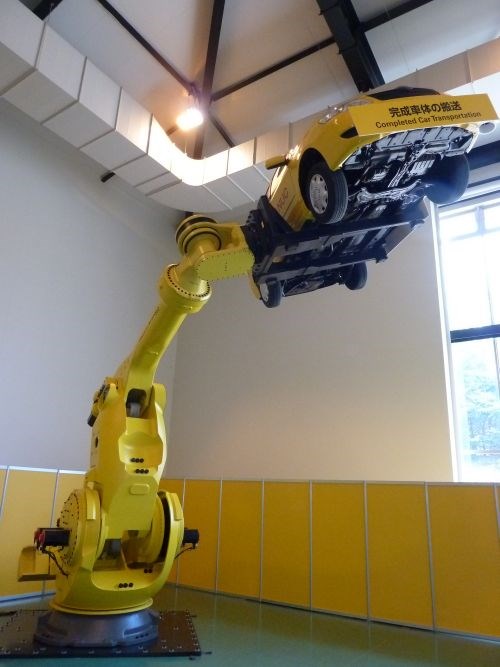The Evolution of Automotive Automation
Robots have intrigued us since being introduced into industrial manufacturing, with one of the earliest U.S. examples involving automotive assembly. From Ford to FANUC, it’s an interesting evolution.
Share







Back in the days when kitchen refrigerators were loaded with ice instead of making it, and stoves were heated with wood or coal rather than gas and electricity, the Ford Motor Co. made automobiles by hand. That was a long time ago, and just as we now dispense ice through the doors or our fridges and own home ovens worthy of a bakery, cars are pieced together on an assembly line by increasingly complex articulated robots. over the years on the Ford assembly line. As remarkable as the progress of autonomy has been in robotics, a recent development is called the “collaborative” robot, meaning it is designed and built to share space and work near human beings. The CR-35iA robot from FANUC, for instance, is ideal for assembly and transferring various parts. In addition, the new M-2000iA/1700L super-heavy payload robot transports completed cars from one position to another high above the factory floor.
Related Content
-
Which Approach to Automation Fits Your CNC Machine Tool?
Choosing the right automation to pair with a CNC machine tool cell means weighing various factors, as this fabrication business has learned well.
-
5 Stages of a Closed-Loop CNC Machining Cell
Controlling variability in a closed-loop manufacturing process requires inspection data collected before, during and immediately after machining — and a means to act on that data in real time. Here’s one system that accomplishes this.
-
Studer's Automation, Entry-Level Solutions Take Center Stage
At its 2024 Music Motion Meeting, Studer AG showed off its entry-level line of grinding machines, as well as its newest universal loading system.












